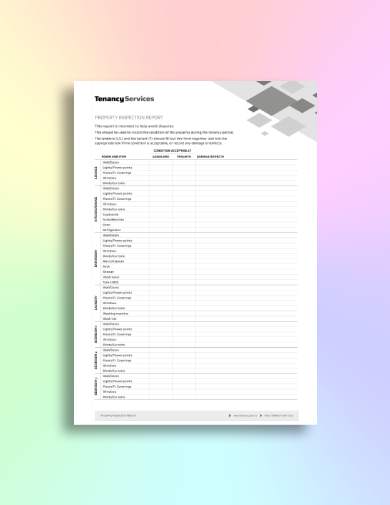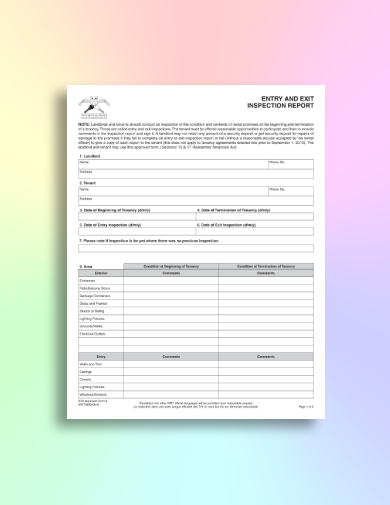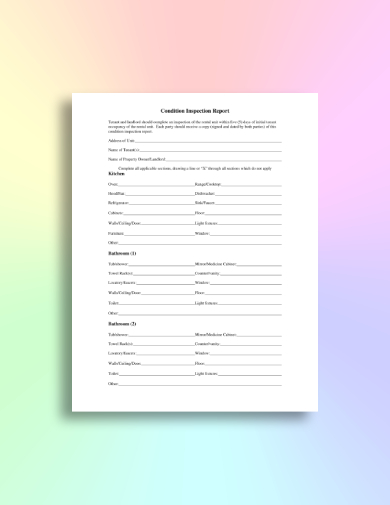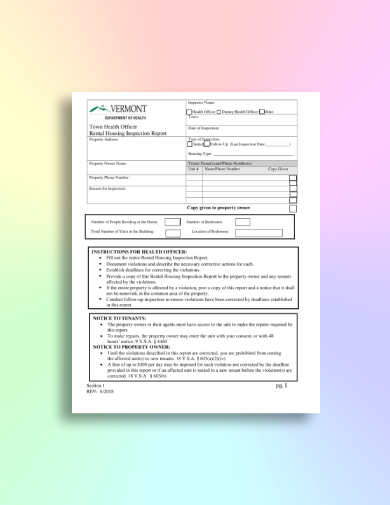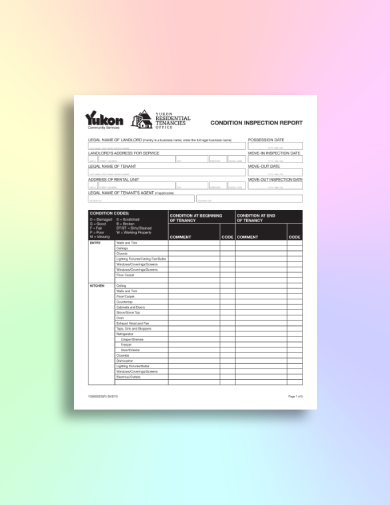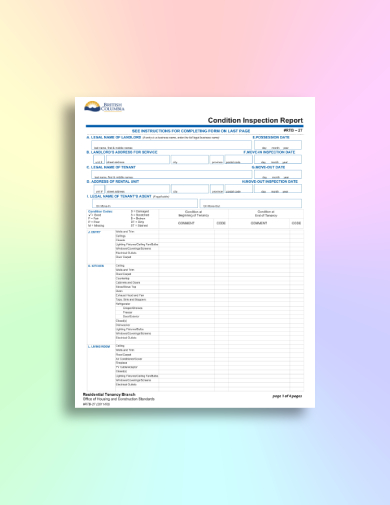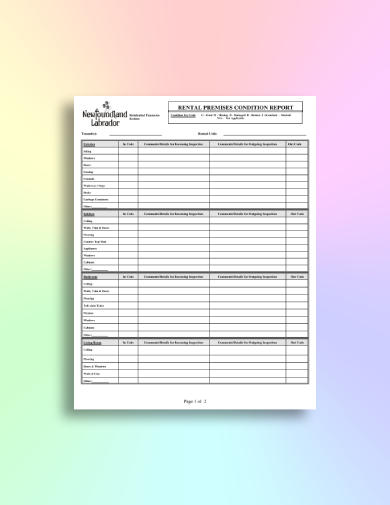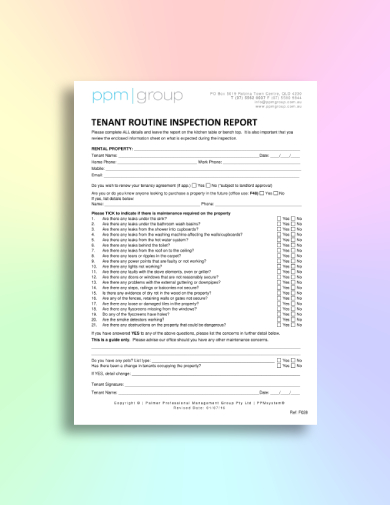9+ Rental Inspection Report Examples to Download
All the items in a rental property must be inspected to assess its condition before and after the tenancy period, and the results of the inspection must be presented in a rental inspection report. This report will show the status of the item so that the landlord can assess if the items have defects, damages, and other issues and to determine if the damage is caused by the tenant or due to wear and tear. Knowing this importance, it is best to prepare a rental inspection report, by referring to the examples presented below.
Rental Inspection Report Examples and Templates
1. Rental Property Inspection Report
This rental property inspection report is used to record the condition of the property during the tenancy period which is to be filled out by the landlord and the tenant. Both must assess if the condition of the item or room is acceptable or not and must state the specific defects that they have found. The typical items or areas in a rental property to be assessed are the lounge, kitchen or dining area, bathroom, laundry area, bedrooms, and other areas, such as trash or rubbish bins, locks, garage port, ground, and number of keys supplied.
2. Entry and Exit Rental Inspection Report
As stated previously, it is important that the inspection must be conducted before and after the tenancy period. Just like this entry and exit rental inspection report, your report must have the following basic details: the respective names and contact details of the landlord and tenant, dates of the beginning and termination of the tenancy, dates of entry and exit inspection, notes regarding the condition of the area or item at the beginning and termination of the tenancy, and signatures of the tenant and landlord.
3. Rental Property Condition Inspection Report
In a typical rental agreement, the inspection of the rental unit must be completed within five days of the initial tenant occupancy of the unit. Both parties, the tenant and the owner or landlord, must participate or be present during the inspection and must keep a copy of the report. The typical areas that you need to assess in the report are the following: kitchen, bathroom, bedroom, living room, and additional items or areas, such as the lawn, garage, garden, attic, and underground.
4. Rental Housing Inspection Report
This rental housing inspection report is structured as follows: the first part provides information about the owner and the inspection conducted. The next part presents the acronyms, terms used, and definitions of those terms. Finally, the last part presents the sections or areas of inspection, which are the following: life safety, sanitation facilities, pest and bedbug infestations, heating, natural and mechanical ventilation, lighting and electricity, and structural elements.
5. Residential Housing Rental Inspection Report
In this inspection report, the general sections are as follows: information of the landlord and tenant, such as their names, addresses, and contact number; inspection details, which include move-in inspection date, move-out inspection date, and move-out date; condition codes; areas to be inspected, such as entry, kitchen, living room, dining room, stairwell and hall, bathrooms, master bedroom, guest bedroom, other bedrooms, exterior, utility room, garage or parking area, keys and control, and others; start and end of the tenancy; and instructions for completing rental unit condition report.
6. Rental Unit Inspection Report
Apart from the units and areas needed to be assessed or inspected, also presented in this rental unit inspection report example are instructions for completing rental the unit condition report. Specific instructions on how to fill up the form at the start of the tenancy as well as at the end of the tenancy are specified as this will help both the tenant and the landlord to immediately complete the related report.
7. Rental Premises Condition Inspection Report
In order to help you specifically identify the premises needed to be inspected, presented in this rental premises condition inspection report are those specific areas which are the following: exterior (windows, doors, fences, grounds, and walkways), kitchen (ceiling, walls, flooring, counter top, and sink), bathroom (tub, sink, toilet, fixtures, and windows), living room (flooring, ceiling, and walls), dining room (flooring, trim, and doors), bedroom (ceiling, flooring, doors, and windows), and basement (doors, windows, furnace, and water tank).
8. Rental Maintenance Routine Inspection Report
While entrance and exit inspections are vital especially for the landlord to know if there are any damages, an inspection can also be conducted in order to know if there are items that need maintenance services. In this way, the tenant and landlord must come to an agreement regarding who will shoulder the repairs and maintenance expenses. This must also be specified in the rental maintenance routing inspection report, such as the one presented above.
9. Residential Rental Unit Inspection Report
This residential unit inspection report can surely be beneficial to both the renter and owner in a way that the renter will know beforehand what are items that need to be replaced or those that must be handled carefully. On the other hand, the landlord will also get to know which items have been damaged or destroyed either by the tenant or by natural depreciation or fortuitous events.
10. Simple Rental Property Inspection Report
Regardless of whether your inspection report is simple or not, the most important thing is that it contains the complete information regarding the inspection of all the units or items inside the property being rented. As can be seen from this simple rental property inspection report, the following are the basic and essential information that must be present: information about the tenant and owner, date occupied, date vacated, specific areas and their move-in and move-out condition, related repair charges, and the signature of both parties.



